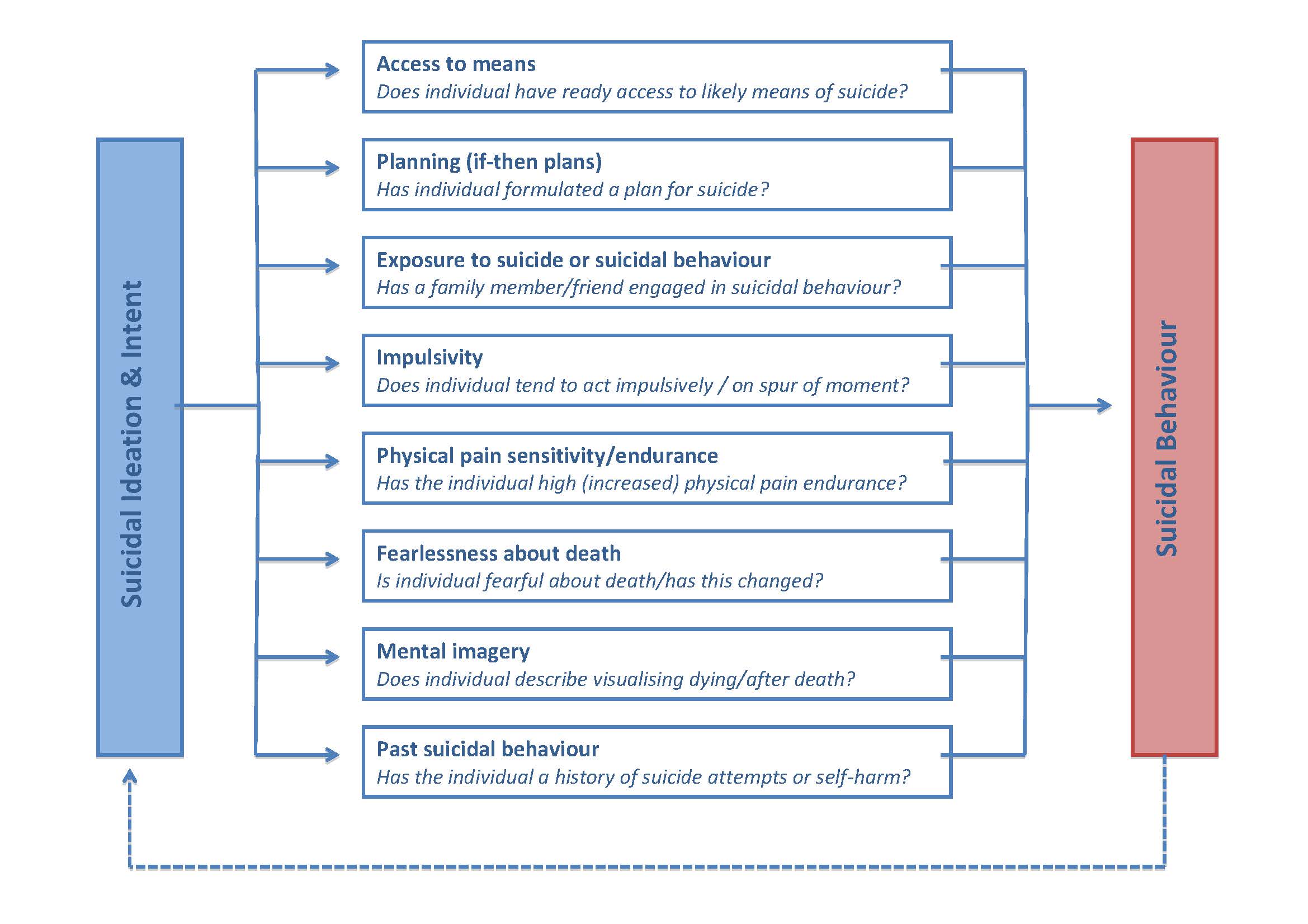Military Operational Medicine (JPC-5)
Advances in Understanding Suicidal Ideation and Behavior



Posted May 20, 2020
Rory O’Connor, Ph.D., University of Glasgow

Dr. Rory O'Connor
Suicide is a major public health concern; however, little progress has been made toward understanding the etiology of suicidal behavior. Many recent efforts investigating psychological factors that increase suicide risk are limited by the lack of a basic science evidence base. This evidence base is critical for developing psychosocial interventions for risk factors associated with suicidal behavior. In 2012, Dr. Rory O’Connor’s “Study to Examine Psychological Processes in Suicidal Ideation and Behavior” (STEPPS) research project was funded through a Defense Medical Research and Development Program Broad Agency Announcement award to empirically test two theoretical models of suicidal behavior in order to determine key factors that predict suicide risk. The STEPPS project consisted of observational and experimental studies in clinical and non-clinical populations that evaluated how the key components of two psychological models, the Integrated Motivational-Volitional Model (IMV) and the Interpersonal Psychological Theory of Suicide (IPT), predict suicidal ideation and behavior and their contribution to suicide risk. By testing the central tenets of these models, Dr. O’Connor and his collaborators aimed to advance the understanding of the basic psychological processes that are associated with suicidal ideation and behavior and apply the IMV and IPT to a military context.
The results from multiple STEPPS studies demonstrated that feelings of defeat, entrapment, and perceived burdensomeness measured by the IMV and IPT models were key to the development of suicidal ideation in non-clinical and clinical populations. Notably, internal entrapment predicted suicidal ideation at follow-ups in community and clinical samples.[1, 2, 4, 5] Volitional factors in the IMV model, such as higher impulsivity, fearlessness about death, and exposure to individuals who had attempted suicide, are thought to be key mechanisms for the translation from suicidal ideation to suicidal behavior.[1, 2, 5] Two studies assessed pain sensitivity as a volitional factor in individuals that had attempted suicide or experienced suicidal ideation. While there was no difference in pain sensitivity, threshold, or tolerance between individuals with suicidal ideation or suicide attempts and those with no suicidal experiences, pain threshold and tolerance were significantly higher in individuals with feelings of entrapment or in “high acquired capability for suicide” situations. These findings support pain sensitivity as a volitional factor as proposed by the IMV model. Additionally, internal entrapment could be an early indicator of increased suicide risk; thus, including an assessment of entrapment during risk assessments or therapeutic interventions could facilitate early detection of suicidality.
Experimental and daily diary studies following levels of cortisol, a stress hormone, and suicidality found that individuals who had made a suicide attempt had blunted cortisol stress responses that may be related to childhood trauma. Adverse childhood experiences can affect the way individuals develop coping and emotional regulation strategies and could lead to an increased risk of developing feelings of entrapment and suicidality when exposed to stress-inducing situations.[3, 6] Assessing individuals for adverse childhood experiences may assist in providing timely support to those at increased risk of suicidality, and interventions that target the development of coping skills may be of particular use in this population.
The findings of the STEPPS project have a number of implications for the military. Assessing feelings of entrapment in military populations may allow for the early detection and intervention of high-risk individuals. The blunted cortisol response in individuals with childhood trauma and its association with suicide attempts in adults is of particular importance to military populations given the high potential for individuals with childhood trauma to enlist in the military.[7] Other results of the STEPPS program suggest that the IMV and IPT models can facilitate identifying individuals at increased risk of suicide.
The STEPPS program has made important contributions to understanding the psychological processes underpinning suicide risk and highlights the importance of basic science approaches. Analyses of the data collected from the various research efforts remain ongoing and could potentially reveal additional clinical targets or inform interventions to address suicide risk.

O’Connor, R.C., & Kirtley, O.J. (2018). The Integrated Motivational-Volitional Model of Suicidal Behaviour. Philosophical Transactions of the Royal Society B. 373: 20170268.
Publications
- Branley-Bell D, O’Connor DB, Green JA, et al. 2019. Distinguishing suicide ideation from suicide attempts: Further test of the integrated motivational-volitional model of suicidal behaviour. Journal of Psychiatric Research 117:100-107. doi:10.1016/j.jpsychires.2019.07.007
- De Beurs D, Fried EI, Wetherall K, et al. 2018. Exploring the psychology of suicidal ideation: A theory driven network analysis. Behaviour Research and Therapy 120:103419. doi: 10.1016/j.brat.2019.103419
- O'Connor DB, Green JA, Ferguson E., et al. 2018. Effects of childhood trauma on cortisol levels in suicide attempters and ideators. Psychoneuroendocrinology 88:9-16. doi: 10.1016/j.psyneuen.2017.11.004
- O'Connor RC, Wetherall K, Cleare S, et al. 2018. Suicide attempts and non-suicidal self-harm: A national prevalence study of young adults. British Journal of Psychiatry Open 4(3):142-148. doi: 10.1192/bjo.2018.14
- Wetherall K, Cleare S, Eschle S, et al. 2018. From ideation to action: Differentiating between those who think about suicide and those who attempt suicide in a national study of young adults. Journal of Affective Disorders 241:475-483. doi: 10.1016/j.jad.2018.07.074
- O'Connor DB, Green JA, Ferguson E, et al. 2017. Cortisol reactivity and suicidal behavior: Investigating the role of the hypothalamic-pituitary-adrenal axis responses to stress in suicide attempters and ideators. Psychoneuroendocrinology 75:183-191. doi:10.1016/j.psyneuen.2016.10.019
References
- Perales R, Gallaway MS, Forys-Donahue, et al. 2012. Prevalence of childhood trauma among U.S. Army soldiers with suicidal behavior. Military Medicine 177(9):1034-1040. doi: 10.7205/milmed-d-12-00054. Full text link: https://academic.oup.com/milmed/article/177/9/1034/4345531
Public and Technical Abstracts: Study to Examine Psychological Processes in Suicidal Ideation and Behavior (STEPPS)
Last updated Thursday, May 26, 2022

















